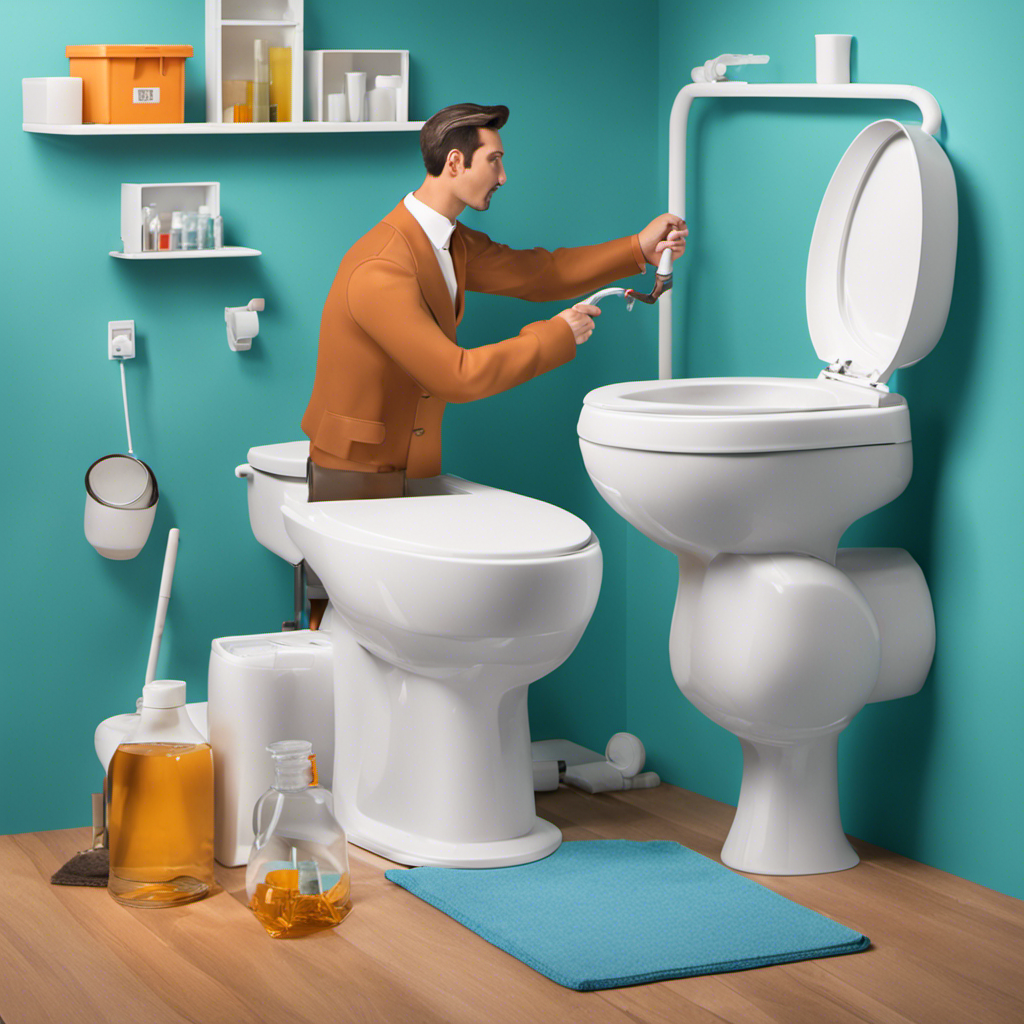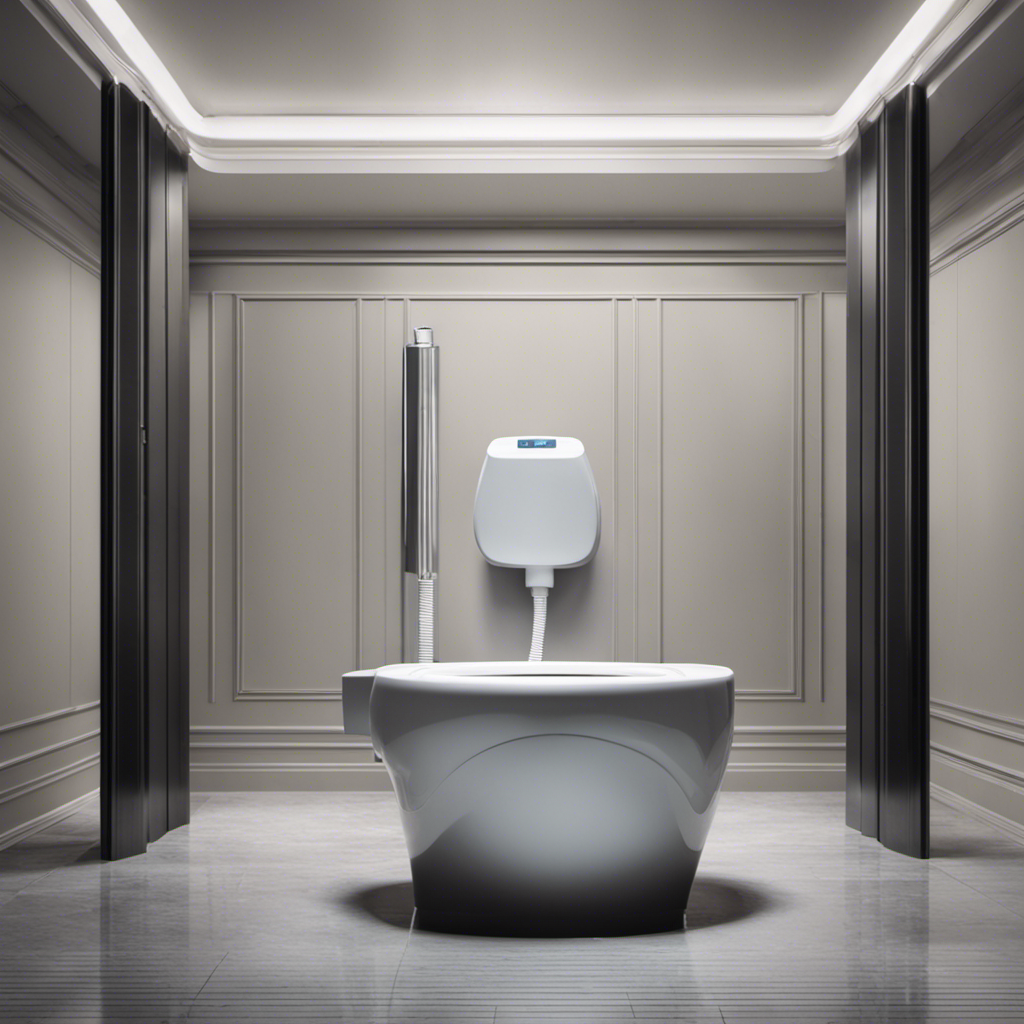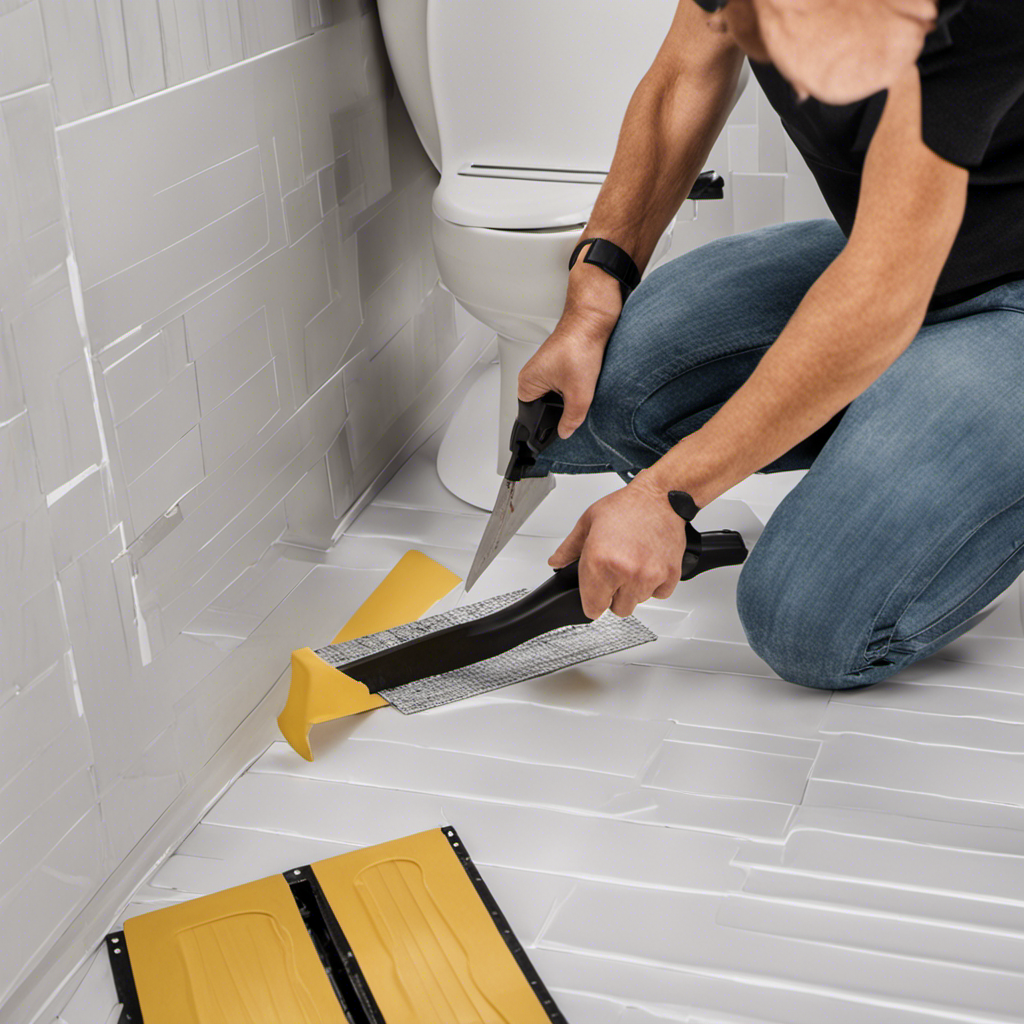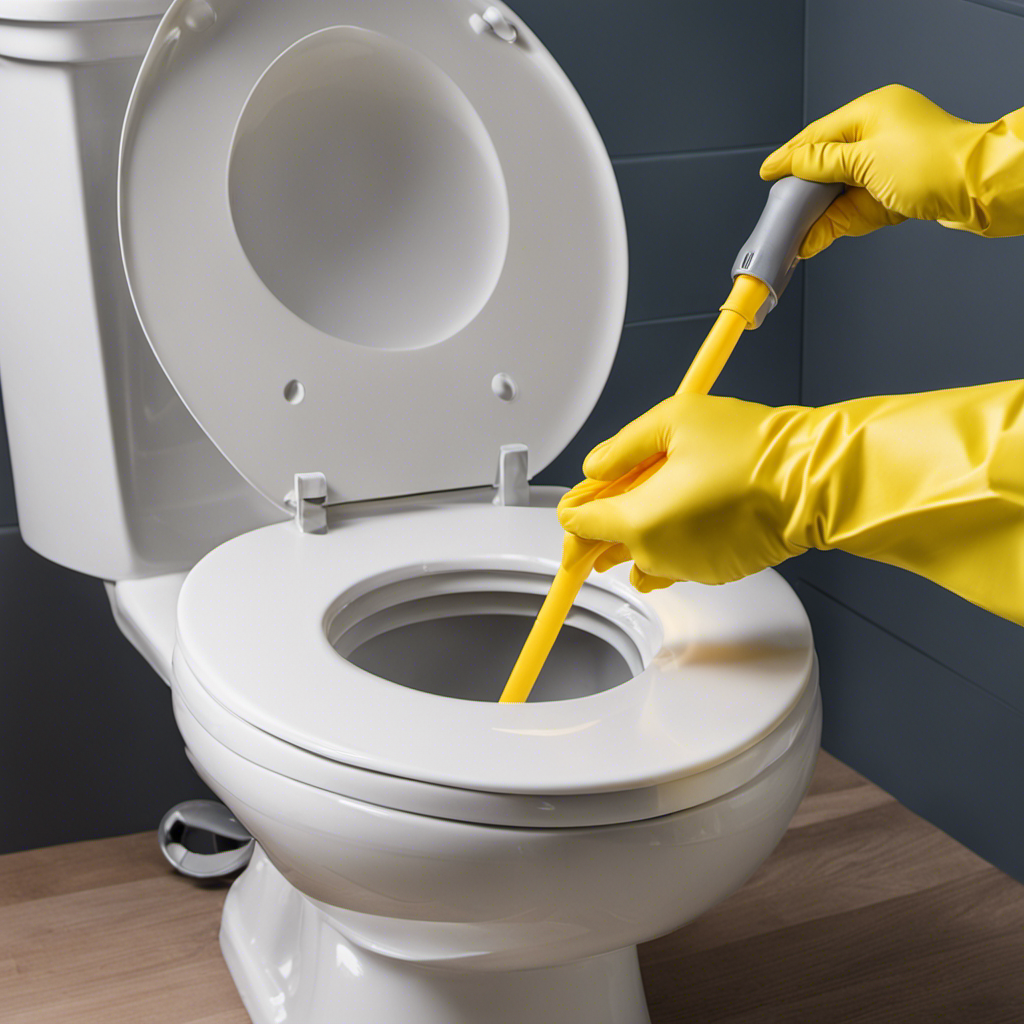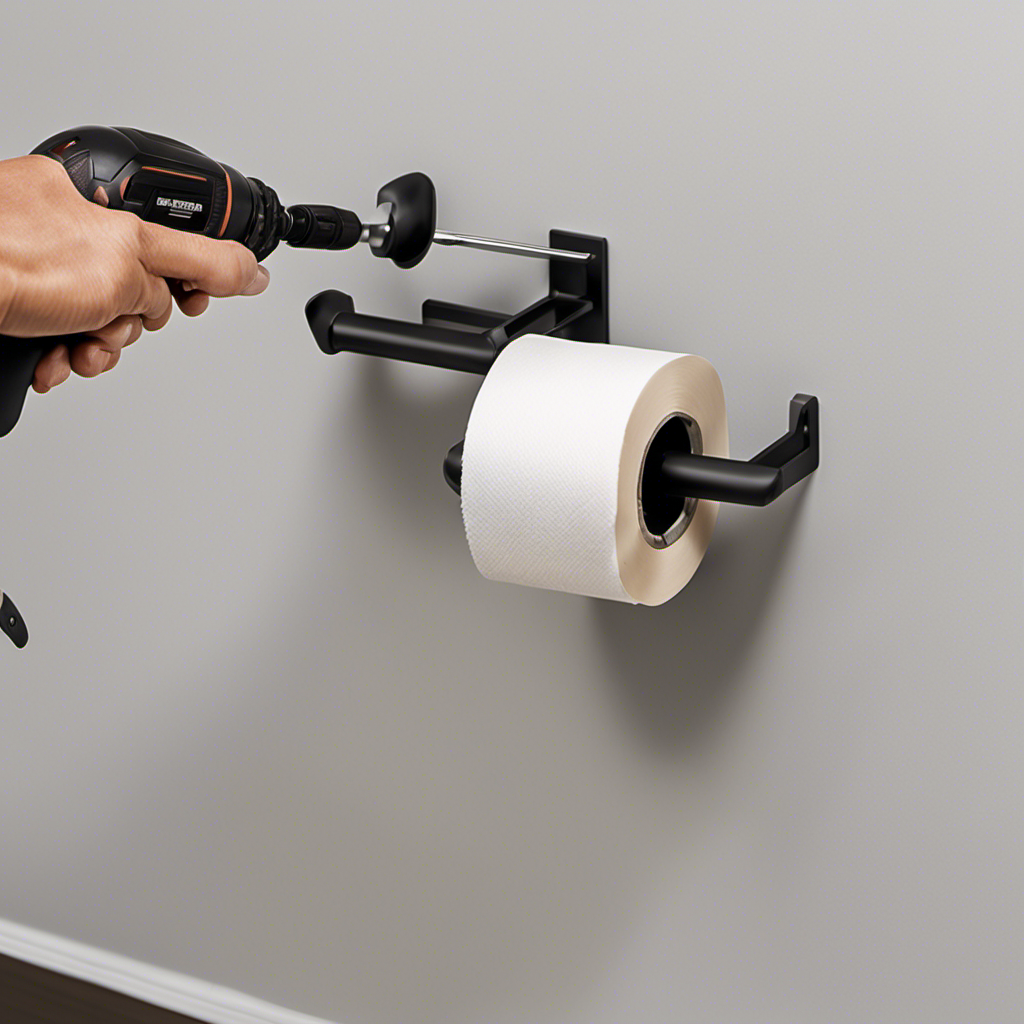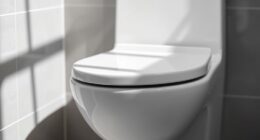Are you tired of waiting forever for your toilet to fill up after each flush? Well, fear not, because I’ve got the solution for you!
In this article, I’ll guide you through the steps to fix a slow filling toilet. We’ll explore the underlying causes, such as a faulty water supply valve or a dirty fill valve.
Then, we’ll troubleshoot issues with the float and float arm. And if necessary, I’ll show you how to replace the fill valve assembly.
Let’s get started and get that toilet filling up fast again!
Key Takeaways
- Check and adjust the water supply valve to ensure it is fully open and not partially closed
- Inspect and clean the fill valve to ensure proper functionality and check for leaks
- Troubleshoot any issues with the float and float arm, adjusting or repairing them if necessary
- Consider replacing the fill valve assembly if it is leaking or malfunctioning, upgrading to newer models for improved efficiency and water-saving features.
Understanding the Causes of Slow Filling Toilets
To understand why your toilet is filling slowly, you need to know the common causes.
One of the main reasons for a slow filling toilet is a problem with the water supply. This can be due to a low water pressure in your plumbing system. When the water pressure is low, it can affect the flush and fill of your toilet. Troubleshooting the toilet flush is necessary to identify if the water pressure is the culprit.
Another common cause is a partially closed water supply valve. If this valve is not fully open, it restricts the flow of water into the toilet tank, resulting in slow filling.
In the next section, we will discuss how to check and adjust the water supply valve to fix the slow filling issue.
Checking and Adjusting the Water Supply Valve
Check if the water supply valve is fully open or partially closed. This is an important step in troubleshooting a slow filling toilet. A partially closed valve can restrict water flow, resulting in a weak flush or slow refill.
To adjust the water pressure, turn the valve clockwise to decrease pressure or counterclockwise to increase pressure. If the valve is faulty and cannot be adjusted, it may need to be replaced. A faulty valve can cause issues with water flow and lead to a slow filling toilet.
Once the water supply valve has been checked and adjusted, it’s time to move on to inspecting and cleaning the fill valve, which is another common cause of slow filling toilets.
Inspecting and Cleaning the Fill Valve
Once you’ve inspected and cleaned the fill valve, it’s important to test its functionality before moving on to the next troubleshooting step.
To ensure everything is in working order, follow these steps:
- Flush the toilet and observe the fill valve in action.
- Check for any leaks around the valve or in the water supply line.
- Adjust the water pressure if necessary by turning the valve clockwise to decrease or counterclockwise to increase the flow.
- Listen for any unusual noises or vibrations during the filling process.
Fixing leaks and adjusting water pressure are crucial in maintaining a properly functioning toilet. Leaks can waste water and increase your utility bills, while incorrect water pressure can lead to slow filling or inadequate flushing.
Troubleshooting Issues With the Float and Float Arm
If you notice any leaks or hear unusual noises during the filling process, it’s important to troubleshoot issues with the float and float arm.
The float is responsible for regulating the water level in the toilet tank, while the float arm connects the float to the fill valve.
If the float is set too high or too low, it can cause the toilet to fill slowly or not fill at all. To adjust the float, locate the adjustment screw or clip and move it up or down until the desired water level is reached.
If the float arm is damaged or bent, it may need to be repaired or replaced. This can be done by disconnecting it from the fill valve and installing a new one.
Replacing the Fill Valve Assembly if Necessary
To ensure proper water flow, it’s important to replace the fill valve assembly when necessary. Upgrading toilet technology can improve efficiency and prevent issues like slow-filling toilets. Here are some reasons why you might need to hire a plumber to replace the fill valve assembly:
-
Leaking or malfunctioning valve: If you notice water constantly running into the toilet bowl, it could be a sign that the fill valve is leaking or not functioning properly.
-
Old or outdated valve: Older fill valve assemblies may not have the same efficiency and water-saving features as newer models. Upgrading to a more modern fill valve can help conserve water and reduce your utility bills.
-
Improved water pressure: A new fill valve assembly can help improve water pressure and ensure a consistent, fast fill every time you flush.
-
Prevent future issues: Replacing the fill valve assembly can prevent future problems with your toilet, such as clogs or leaks, saving you from potential headaches and expensive repairs down the line.
If you’re not comfortable replacing the fill valve assembly yourself, it’s best to hire a plumber to ensure the job is done correctly and to avoid any further damage to your toilet.
Frequently Asked Questions
How Can I Determine if My Toilet Is Experiencing Slow Filling Issues?
To determine if my toilet is experiencing slow filling issues, I can troubleshoot by checking for potential causes such as a faulty fill valve, clogged water supply line, or low water pressure.
Can a Faulty Water Supply Valve Cause Slow Filling in a Toilet?
Yes, a faulty water supply valve can cause slow filling in a toilet. It’s one of the common reasons for this issue. Troubleshooting toilet problems like this involves checking the water pressure and replacing the faulty valve if necessary.
What Are the Common Signs of a Malfunctioning Float and Float Arm?
When it comes to a malfunctioning float and float arm, there are a few common signs to look out for. These include a constantly running toilet, water level fluctuations, or a toilet that won’t flush properly. Troubleshooting tips can help identify and resolve these issues.
Can a Clogged Fill Valve Lead to Slow Filling in a Toilet?
Yes, a clogged fill valve can definitely lead to slow filling in a toilet. Troubleshooting a slow filling toilet involves checking for any blockages or debris in the fill valve that may be causing the issue.
Are There Any Temporary Fixes for a Slow Filling Toilet Before Replacing the Fill Valve Assembly?
Before replacing the fill valve assembly, there are a few temporary fixes you can try for a slow filling toilet. First, check if the water supply valve is fully open. You can also clean the fill valve or replace the flapper to improve water flow.
Conclusion
In conclusion, fixing a slow filling toilet is a relatively simple task that can be done by following a few steps. By understanding the causes of the issue and checking and adjusting the water supply valve, inspecting and cleaning the fill valve, and troubleshooting issues with the float and float arm, you can easily resolve the problem.
However, if all else fails, don’t hesitate to replace the fill valve assembly. Fixing a slow filling toilet is like unclogging a drain, clearing the path for a smooth and efficient flushing experience.
